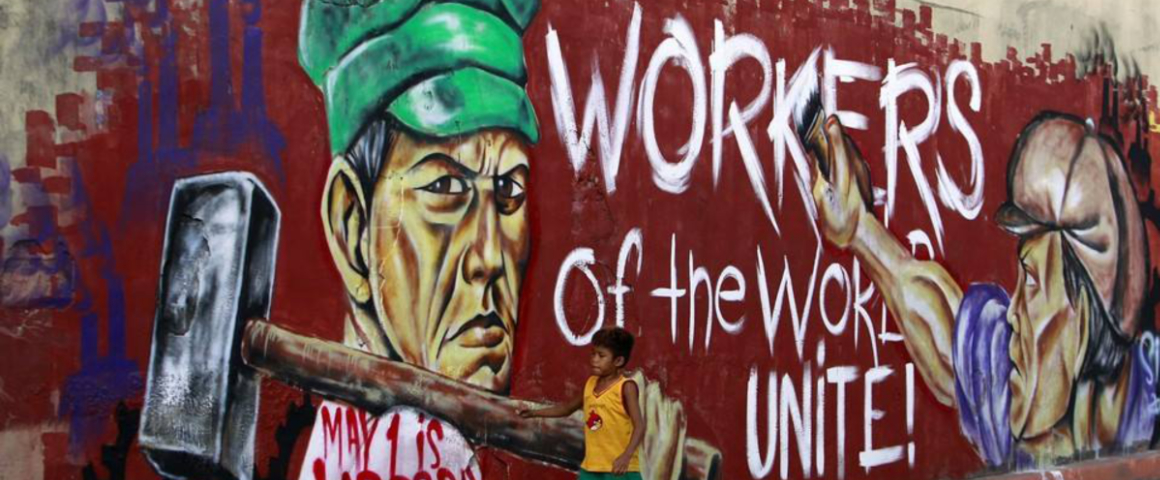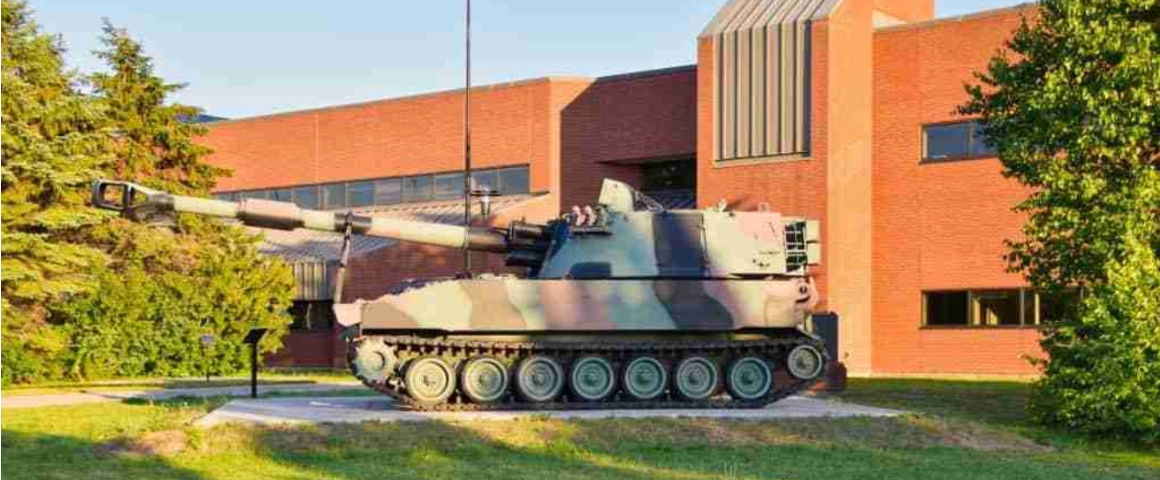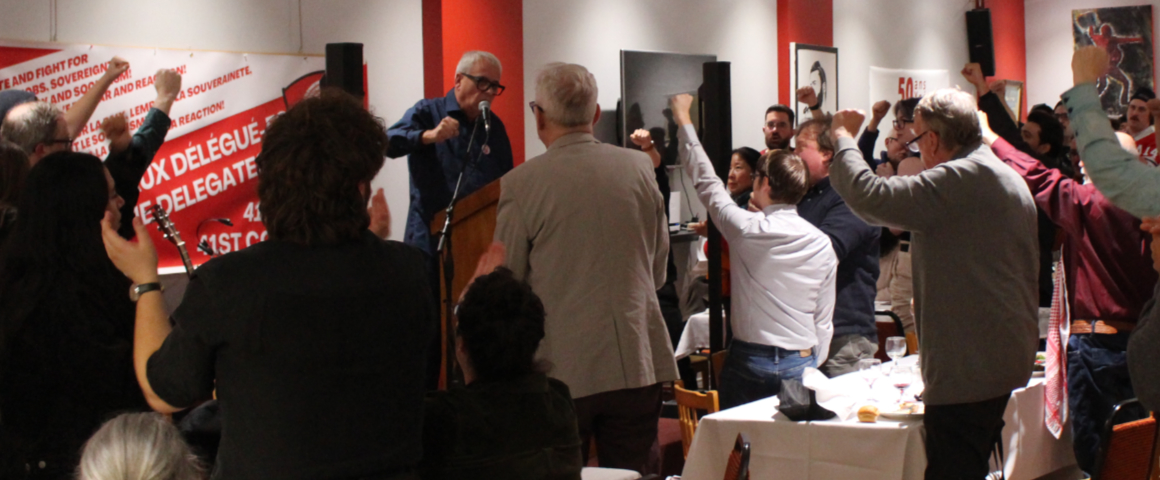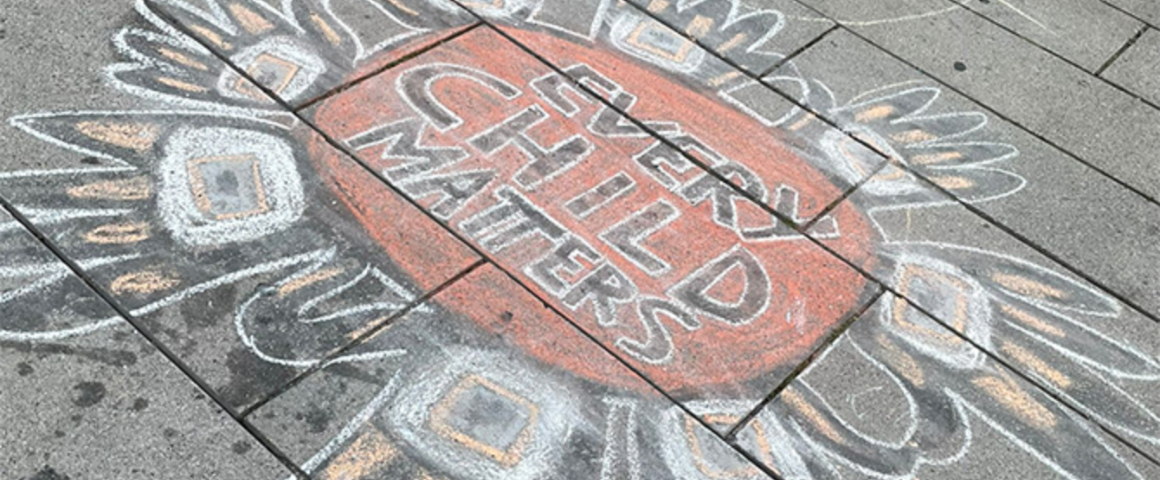For several years now, the house of labour in Canada has struggled with real problems of disunity. Unifor, the largest private sector union in the country, has remained outside the Canadian Labour Congress since January 2018, and Teamsters Canada left the congress in March 2021. While the largest of Quebec’s labour centrals, the Fédération des travailleurs et travailleuses du Québec (FTQ), is affiliated to the CLC, the majority of unionized workers in Quebec are not. On top of this, the labour movement across Canada has for decades outsourced its political work to political parties – particularly the NDP but also the Liberals.
The left in the labour movement has long called for action to confront these two weaknesses and move the movement forward. In this article, excerpted from The Spark!, long-time labour and peace activist George Gidora looks at the historical experience of workers in BC, to help understand the importance of labour unity and political independence.
At the beginning of the 1900s there were 160 trades locals in BC, and in Vancouver there was nearly a 100 percent organization of skilled workers. This was an era of almost continuous labour strikes for wages and better working conditions. Working conditions did gradually get better, but not without struggle and political action to secure provincial labour legislation which finally recognized some basic conditions that we take for granted today.
At the same time there was another and growing movement that was clearly socialist in its outlook, the Western Federation of Miners, which rivaled the Trades and Labour Council of Vancouver for leadership of the labour movement in BC and the West. They actually officially adopted as their own the entire program of the Socialist Party of America at their Denver Convention in 1902. There was also a difference of attitude between the Trades and Labour Council of Vancouver, on the one hand, and the Dominion Trades Congress and the American Federation of Labour, on the other. The main difference was the Trades and Labour Council’s call for independent labour political action.
During this time there was continuous pressure from outside the organized trade union movement in BC for industrial unionism and political independence from the old-line capitalist parties. There was a lot of sympathy for the idea of non-craft “industrial” unionism, and the Trades and Labour Council of Vancouver was among those who were in support of this idea. They passed a resolution instructing their organizational committee to affiliate any new unions organized for which there was no craft union to the American Labour Union.
In 1905 the Industrial Workers of the World made their appearance in BC and right away the Western Federation of Miners and the American Labour Union affiliated to the new group. 1906 saw the first IWW chapter organized in Vancouver. The history of the IWW all over North America, including BC, was one of brave and heroic struggles, with many martyrs to the class struggle – fighters like Joe Hill, Frank Little, Wesley Everett. Historic labour battles were led and won by the IWW, improving wages and working conditions for many thousands of workers.
However, it is worth looking at what ended the influence of the IWW in conjunction with the Russian Revolution, because that event brought to a head the simmering differences that had been debated for many years in the world socialist movement.
The First World War brought to the fore one of the most divisive issues facing the Second International, over the question of war and peace. Significant sections of the Second International were prepared to take a nationalist position and support their native capitalists and imperialists in what was clearly another imperialist war. Many others, true internationalists, quite correctly pointed out that workers would be killing workers, and the only winners would be the capitalist system and imperialism. This destroyed the Second International as an effective revolutionary socialist voice. The IWW to its credit was opposed to the war.
Locally, capitalists took full advantage of the war to ship thousands of young workers off to Europe to be slaughtered. They also used the draft laws to weed out troublemakers at home, such as Ginger Goodwin. The leaders of the IWW split into two factions over whether to be a political movement or to be simply an economistic “job union”. This battle raged for a number of years, through the end of the war and the Russian Revolution. It was never resolved within the organization and was a factor ending the major influence of the IWW.
Despite a huge anti-war protest in Canada, the official, non-IWW trade union movement made no unpatriotic noises and would not take issue with the war. They neither supported nor opposed it, making no effort to resist the bloodbath that was taking off many of their members. However, in BC the Federation of Labour and the Vancouver Trades and Labour Council called for a general strike when the first draft resisters were arrested; but it never took place, largely owing to a lack of support from the Dominion Trades Congress and therefore the local craft unions. This almost resulted in the BC Federation of Labour and the Vancouver Trades and Labour Council withdrawing from the Dominion Trades Congress. In the West there was a large anti-war resistance among workers, but there was no appetite for resistance on the part of the Dominion Trades Congress and the American Federation of Labor.
However, the Russian Revolution caught the workers’ imagination, representing a major victory for the working class amid the slaughter and carnage taking place in Europe. The name Lenin became well known to workers in BC. The Vancouver Trades and Labour Congress distributed a number of Lenin’s pamphlets, and many workers proudly proclaimed themselves Bolsheviks.
When the First World War ended and the imperialists turned their attention to destroying the new Soviet state, the Trades and Labour Council unanimously passed a resolution demanding that Canada’s troops be withdrawn from Russian territory, and all aggression and intervention be stopped. The BC Federation of Labour did the same, but unfortunately no direct action was taken to prevent the shipment of war materials from the west coast to the counterrevolutionary forces in Russia, although some individuals refused to handle war cargo and several longshoremen had unfortunate incidents where artillery parts “accidently” dropped into the water.
There was great enthusiasm for the new Soviet state, and the weakening of the IWW as an organization left the field open for yet another attempt to organize industrial unions.
In 1919 the One Big Union (OBU) was formed as a joint project of the BC Federation of Labour and the most progressive elements of the Alberta Federation of Labour. Resolutions passed at the 1919 Calgary conference demonstrated the revolutionary spirit of the founders. Revolutionary greetings were sent to the new Soviet republic and to the Spartacus League of Rosa Luxembourg and Karl Liebknecht in Germany. The conference embraced the slogan of the “dictatorship of the proletariat”.
These bold provocative declarations opened the new OBU to wide attacks from the capitalists, who were extremely hostile to anything remotely revolutionary following the Russian Revolution. They were able to make the argument that the OBU was starting a revolution. The Winnipeg General Strike and sympathetic strikes in Vancouver and other Western cities were described as attempts to set up soviets “in our democratic country”. The OBU was doomed before it was born. With the help of all the reactionaries, particularly those in the labour movement, it was utterly broken, and many good militant unionists were once again on the outside of the main labour movement.
The IWW and OBU made the same fundamental mistake. They tried to combine a revolutionary political program with the task of an ordinary trade union, the fight for better wages and working conditions. They tried to be a political party and a trade union all in one package.
A union should take in all workers in a given workplace or occupation, regardless of their attitude towards politics. It cannot be a revolutionary party, though it may by majority vote give its active support to particular governmental measures and campaigns, and so help the revolutionary struggle.
A significant number of trade union activists in BC who were inspired by the Russian Revolution began to take more interest in the revolutionary writings of Lenin and the Bolsheviks. Together with revolutionary-minded members of the Socialist Party of North America and the Socialist Party of Canada, they formed the Communist Party of Canada.
The new Party took an active role in promoting the unity of all labour and advocated not only organizing industrial unions, but uniting the entire labour movement, both the craft and industrial unions. They took immediate steps to gather the workers into one organization. Their first action was to invite all trade unions, unemployed organizations and working-class political parties to a conference to discuss the setting up of a labour party that would be all-embracing. These efforts proved unsuccessful, but the idea was correct.
The example of the Russian Revolution demonstrated to many revolutionary-minded activists that it was possible for workers to seize state power and build a socialist economy and society, ending exploitation. This fundamentally changed the outlook of labour activists, who were struggling with the ideas faced by generations before them over what the relationship should be between political action and trade union action. The ideas of anarcho-syndicalism had proven to be untenable, but their organizations had demonstrated the power of organized labour.
The ideas coming from the Communist International put forward a more logical approach. The working class must have its own independent organizations to defend wages and working conditions and to represent the interests of workers in government and society. The working class potentially has the power to bring down the capitalist system and put an end to war and poverty forever. There needs to be an all-encompassing revolutionary movement that includes all revolutionary-minded organizations, including those political parties that work for the same goals.
The principles of unity, struggle and peace first put forward by the Communist Party have not changed, although tactics and strategies, alliances and many other conditions constantly change and evolve. But the basic needs and principles involved in building a movement for social change remain the same.
Support working-class media!
If you found this article useful, please consider donating to People’s Voice or purchasing a subscription so that you get every issue of Canada’s leading socialist publication delivered to your door or inbox!
For over 100 years, we have been 100% reader-supported, with no corporate or government funding.




